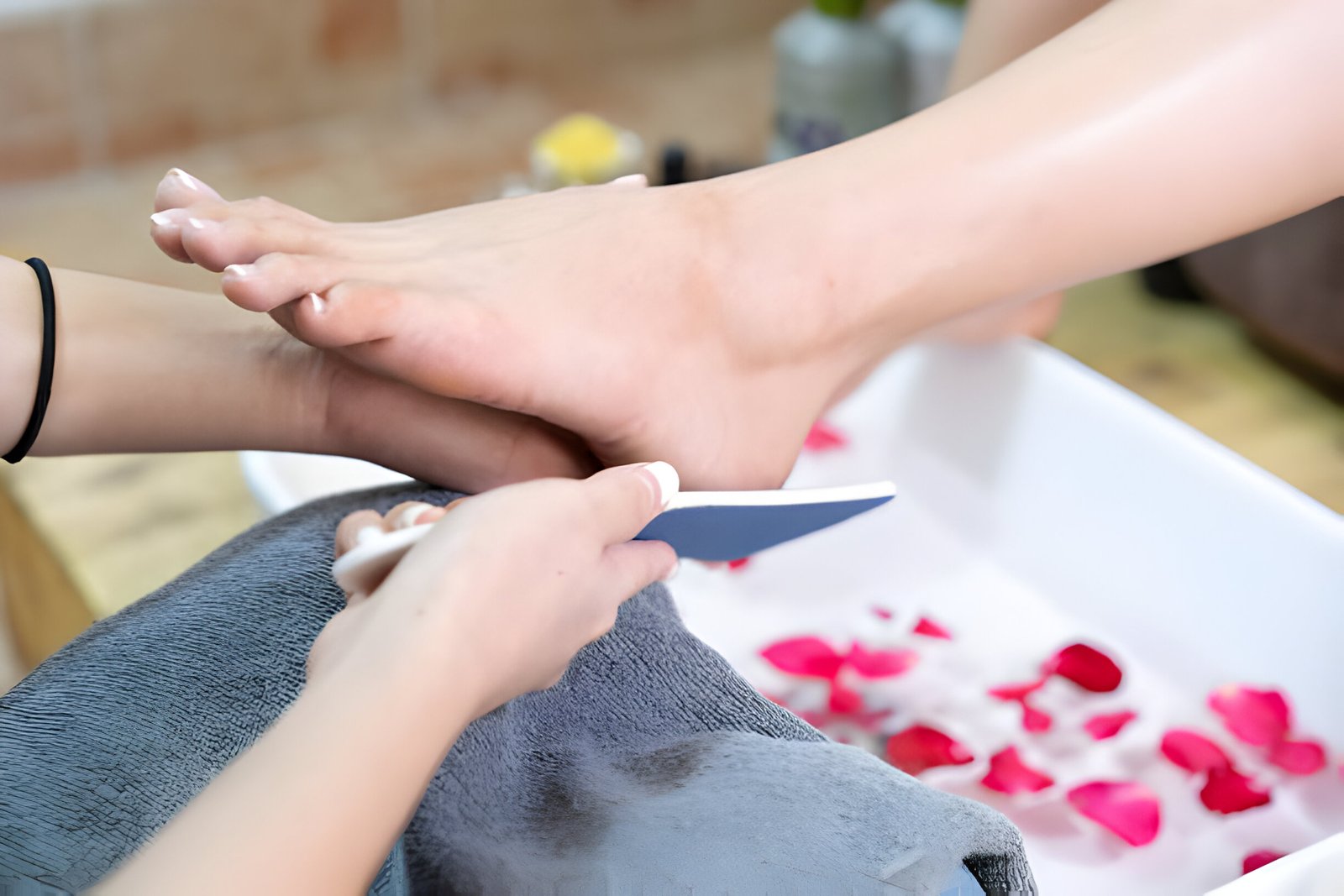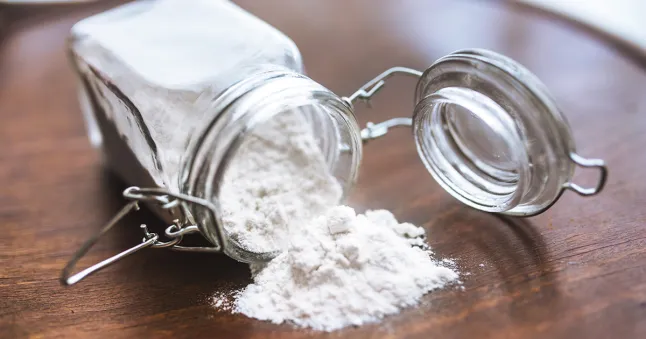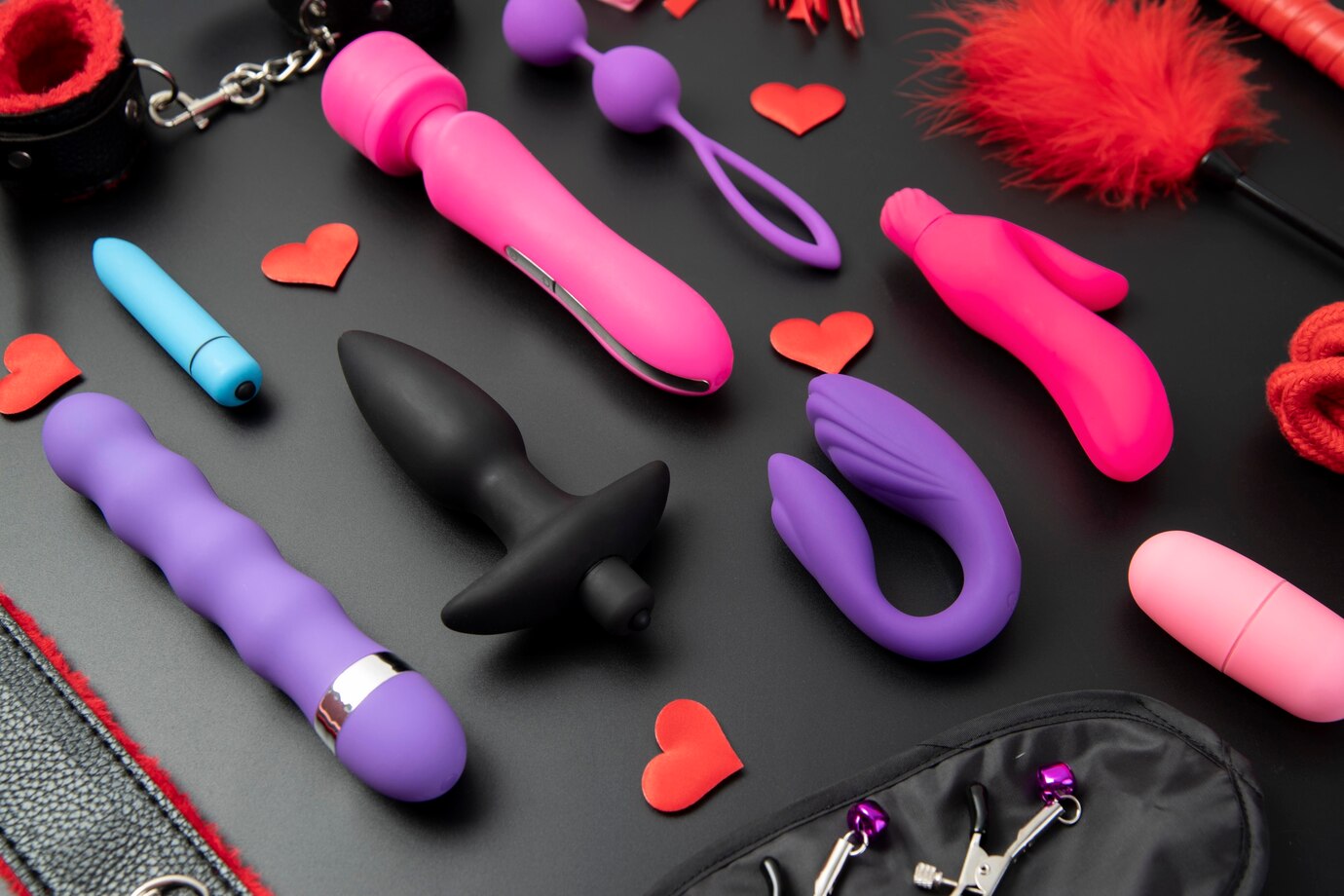
Image Credit: Getty Image
Discovering the best callus remover for feet can transform the way your feet look and feel, making it an essential endeavor for anyone striving for healthy, soft skin. Calluses on the feet, a common concern for many, arise from repeated friction and pressure, leading to thickened and often uncomfortable skin. The importance of finding effective solutions cannot be overstated, as it not only enhances the aesthetic appeal of your feet but also contributes to overall foot health and comfort. With a myriad of products available in the market, identifying the right callus remover for feet—a task that can range from navigating electric callus removers to exploring natural remedies—requires a comprehensive guide.
This article will delve into a variety of options available for those wondering how to get rid of calluses on feet, including the latest in electric callus remover for feet, manual tools, and innovative creams and gels designed for this purpose. By exploring the top picks for 2024, readers will gain insight into the best callus remover for feet, spanning from high-tech electric options to effective DIY and natural solutions. Additionally, the guide will highlight callus prevention strategies and when it might be necessary to seek professional help. Through an examination of electric callus remover for feet, professional callus remover tools, and the best callus remover for feet available on platforms like Amazon, this guide aims to provide a comprehensive overview for achieving and maintaining smooth, callus-free feet.
Importance of Callus Removal

Callus removal is a crucial aspect of foot care, impacting health, aesthetics, and comfort. Understanding its significance can lead to better foot health and overall well-being.
Health Benefits
Calluses, while protective, can sometimes pose health risks, especially for individuals with conditions like diabetes. These hardened areas of skin can mask underlying issues such as ulcers by dulling sensation, making it difficult to detect pain or discomfort. Proper management and removal of calluses are vital to prevent complications, including infections that can arise from cracked or excessively thick calluses. Additionally, maintaining callus-free feet can enhance sensory feedback and walking mechanics, which are essential for balance and preventing falls.
Aesthetic Improvements
Beyond health implications, calluses can be unsightly, affecting one’s confidence and comfort in wearing open footwear. Removing calluses helps restore the skin’s natural texture and appearance, leading to smoother, more attractive feet. This not only improves personal hygiene but also boosts self-esteem, making individuals more comfortable and confident in their skin.
Comfort Enhancements
Thick calluses can make walking or standing painful, especially when they protrude significantly enough to alter the fit of shoes. Addressing calluses by using methods like professional removal or at-home care with pumice stones can significantly enhance comfort. Adjustments to footwear, such as using customized orthotics or padded socks, can also prevent callus formation by redistributing pressure and reducing friction, leading to a more comfortable walking experience.
Callus management is a preventive measure as much as it is a corrective one, ensuring feet not only look good but also remain healthy and functional.
Types of Callus Removers

Electric Devices are becoming increasingly popular for their ease of use and effectiveness. Electric foot files, for instance, allow for a gentle rotation that can transform rough feet into soft ones in a matter of minutes. However, caution is advised to avoid overgrinding, which can lead to infection and increased skin damage. Brands like Amopé offer various grit options for their devices, emphasizing the importance of replacing heads to maintain effectiveness.
Manual Tools remain a reliable choice for those preferring a more hands-on approach. Foot files with different grit levels provide options from gentle to medium exfoliation, suitable for regular maintenance of calluses. Pumice stones, though common, require careful handling to avoid bacterial growth and may not last as long as metal files. Stainless steel files are preferred over nickel to minimize skin irritation.
Chemical Treatments offer a robust solution for removing calluses through ingredients that break down tough skin. Foot-peel masks, which utilize similar chemical exfoliators, provide a hands-off approach, allowing the active ingredients to work over time, revealing smoother skin after the peeling process.
Top Electric Callus Removers for 2024

High-End Models
The BCM-1138, priced at $23.99 (regularly $39.99), offers advanced features for those seeking a premium option. It’s fully waterproof (IPX6 rating), suitable for use in the shower, and charges in just 2 hours, providing 45 minutes of continuous use. The dual-speed settings (1900/2200 RPM) allow users to tailor their treatment based on callus thickness.
The M10 model stands out at $24.99 with its vacuum absorption system that collects skin debris for a cleaner experience. It charges via USB in 3 hours and offers 40 minutes of use. Equipped with three diamond grinding heads, it caters to varying levels of callus coarseness. Though not waterproof, its detachable head ensures easy cleaning.
Mid-Range Options
The BCM-1141, available for $21.99, is an excellent mid-range choice. It charges in 2 hours and can be used for an equal duration. This IPX7 waterproof model is perfect for bath or shower use and features two different rollers to customize treatment based on callus severity. Its compact design (6.9 x 5.7 x 2.2 inches) makes it easy to handle and store.
Budget-Friendly Choices
For those on a budget, the BCM-1058 is the most economical at $17.99. It features an illuminating LED for enhanced visibility and a removable grinding head for easy cleaning. Although it requires a longer charging time of 8 hours, its IPX5 rating ensures it can withstand moisture without being submerged.
The BCM-1135, priced at $9.99, offers great value with robust features. It operates at 220V and 3W, making it powerful yet energy-efficient. This portable and cordless device is also IPX7 waterproof and can be used for 40 minutes after an 8-hour charge. It includes a comprehensive pedicure set, making it a complete solution for home foot care.
Best Manual Callus Removal Tools

For those who prefer a hands-on approach to foot care, manual callus removal tools offer a range of options to maintain smooth, healthy feet. These tools are effective, affordable, and easy to use, making them a popular choice for at-home foot care.
Professional-Grade Files
Professional-grade files are essential for those seeking thorough callus removal. These files typically feature a stainless-steel construction with multidirectional grit, allowing for efficient removal of tough skin without causing damage. The coarse side of the file is ideal for tackling harder calluses, while the fine side is perfect for regular maintenance and smoothing out softer areas. Users appreciate the control and effectiveness of these files, which can handle even the most stubborn calluses with ease.
At-Home Use Rasps
At-home use rasps are another excellent option for manual callus removal. These tools are designed with rough-textured surfaces that gently file down built-up skin, revealing softer and smoother feet underneath. Rasps are particularly favored for their ease of use and the ability to quickly smooth out rough patches on heels and toes. They are an ideal choice for regular foot care routines, helping to keep calluses at bay without frequent visits to a professional.
Natural Stone Options
Natural stone tools, such as pumice stones and foot files made from volcanic rock, offer a gentle yet effective way to exfoliate feet and remove dead skin. These natural options are perfect for those looking for an eco-friendly solution to foot care. The abrasive surface of natural stones works well to slough off dead skin, while being gentle enough to prevent skin damage. Regular use of these stones can significantly improve the texture and health of the feet, making them a staple in many home spa treatments.
Each of these manual callus removal tools provides a unique way to achieve and maintain smooth, callus-free feet. Whether one opts for professional-grade files, at-home rasps, or natural stone options, these tools are crucial for proper foot care and can drastically enhance the comfort and appearance of one’s feet.
Effective Callus Removing Creams and Gels

For those seeking effective solutions for callus removal, creams and gels offer a convenient and efficient method. These products range from prescription-strength formulas to over-the-counter solutions and natural options, each designed to soften and reduce tough skin.
Prescription-Strength Formulas
Prescription-strength callus removers often contain potent ingredients like salicylic acid, which is also used to treat skin and foot warts. These formulations work by causing the callus to peel off gradually. It’s important to follow a specific application routine: soaking the callus in warm water, drying thoroughly, and applying the medication. This process enhances the medication’s effectiveness by allowing deeper penetration into the skin.
Over-the-Counter Solutions
Over-the-counter callus removers like Kerasal Intensive Foot Repair and PurSources Foot Cream are popular for their affordability and effectiveness. Kerasal combines urea and salicylic acid to exfoliate dead skin effectively, while PurSources offers a 40% urea cream that works well alone or in combination with manual tools for stubborn calluses. Users are advised to wear gloves during application to maximize the product’s efficacy and protect the hands.
Natural and Organic Products
For those preferring a more natural approach, products like AmLactin’s Foot Repair Cream and Eucerin’s Advanced Repair Cream are excellent choices. AmLactin uses 15% lactic acid to break down tough keratin buildup, while Eucerin combines urea and lactic acid with hydrating ingredients like shea butter and ceramides. These creams not only treat existing calluses but also help prevent new ones from forming by maintaining proper hydration and barrier function of the skin.
Each product type offers unique benefits, catering to different preferences and needs in callus treatment. Whether one chooses a prescription-strength formula, an over-the-counter solution, or a natural product, regular use is crucial for achieving and maintaining smooth, healthy feet.
Innovative Foot Peel Treatments

Foot peel treatments have revolutionized the way individuals tackle hardened calluses and rejuvenate their feet. These treatments are designed to remove dead skin effectively, leaving the feet soft and smooth. Here’s a closer look at some of the innovative options available.
Sheet Mask Peels
Sheet mask peels like Patchology and Tonymoly’s Magic Foot Peeling Shoes offer a convenient and mess-free solution to foot care. These pre-soaked booties contain a potent blend of alpha-hydroxy acids (AHAs) and beta-hydroxy acids (BHAs) that work to dissolve dead skin cells. Users simply need to wear these gel-lined booties for about an hour to initiate the peeling process, which continues over several days, revealing much softer and smoother feet.
Liquid Peel Solutions
The BeautyPro Foot & Callus Peel represents a powerful liquid peel option. It features a unique blend of 16 natural plant botanicals and exfoliating acids like Salicylic and Glycolic Acid. This treatment is applied through wearable booties and takes about 90 minutes to work. The peeling process typically begins a few days after application and continues over a week, thoroughly removing rough and dead skin.
Gradual Peeling Serums
For those looking for a less immediate but equally effective treatment, gradual peeling serums offer a great alternative. These serums slowly exfoliate the feet with continued use. Ingredients such as Glycolic Acid help break the bonds between dead skin cells, speeding up the cell renewal process without the abrupt peeling associated with mask treatments. This method is ideal for maintaining long-term results and overall foot health.
These innovative foot peel treatments cater to different preferences and needs, providing various methods to achieve soft, callus-free feet. Whether one chooses a sheet mask peel for a quick fix or a gradual serum for ongoing care, these treatments ensure effective callus removal and skin rejuvenation.
Callus Prevention Strategies

Proper Footwear Selection
Selecting the right footwear is crucial for preventing calluses. Shoes should fit properly, providing enough room for the toes without squeezing them together. Additionally, replacing worn-out shoes and opting for those with adequate arch support can significantly reduce the risk of calluses. For those prone to foot issues, custom orthotic inserts or over-the-counter pads can be used to address specific areas of concern, effectively redistributing pressure away from callus-prone areas.
Daily Foot Care Routine
Maintaining a regular foot care routine is essential for callus prevention. This includes washing feet daily in warm water with mild soap and thoroughly drying them, especially between the toes to prevent moisture buildup, which can lead to skin issues. Keeping toenails trimmed also helps alleviate pressure on the toes. For added protection, applying nonmedicated foot powder can absorb excess moisture, while antibacterial ointments can prevent infections.
Moisturizing Techniques
Keeping the feet well-moisturized is key to preventing calluses by reducing friction. Use creams or lotions containing ingredients like urea, lactic acid, or salicylic acid, which help soften and exfoliate tough skin. However, it’s important to avoid over-moisturizing, especially between the toes, to prevent fungal infections. Applying moisturizer right after bathing can lock in moisture, keeping the skin soft and less prone to forming calluses.
When to Seek Professional Help

Seeking professional help for callus management is crucial, especially in severe cases, for individuals with underlying medical conditions, and particularly for those managing diabetes.
Severe Callus Cases
Professionals should address severe callus cases where the calluses are excessively thick, leading to discomfort or pain. These hardened areas can mask deeper issues such as infections or ulcerations, which require medical intervention. A healthcare provider can safely debride hyperkeratotic skin, ensuring that any underlying conditions are treated without the risk of further complications.
Underlying Medical Conditions
Individuals with underlying health conditions that affect circulation or skin integrity, such as peripheral arterial disease (PAD), should consult healthcare providers regularly. These conditions can complicate the presence of calluses, increasing the risk of complications like infections or ulcerations. Medical professionals can perform comprehensive exams, including vascular assessments, to manage these risks effectively.
Diabetic Foot Care
For those with diabetes, foot care is a critical aspect of their overall health management. Diabetics are at higher risk for neuropathy and PAD, which can lead to reduced sensation in the feet and slower healing of wounds.
- Annually for those without peripheral neuropathy.
- Every six months for those with neuropathy.
- Every 3 to 6 months if other risk factors like PAD or foot deformities are present.
- Every 1 to 3 months for those with a history of ulcers or amputations.
During these visits, professionals will not only check for calluses but also provide comprehensive care, including dermatological assessments and musculoskeletal evaluations. They will also educate patients on proper diabetic foot care to prevent serious complications such as ulcerations and amputations.
In all cases, individuals should never attempt to remove calluses themselves, particularly if they have diabetes or other high-risk conditions. Professional care ensures safe and effective management, preventing serious health issues.
Conclusion
Throughout this comprehensive guide, we’ve explored the myriad of options available for effectively managing and removing calluses, from the latest electric callus removers and manual tools to innovative creams, gels, and foot peel treatments. By considering the various advanced solutions and preventive strategies, individuals can maintain soft, healthy, and callus-free feet, significantly enhancing their comfort and quality of life.
Moreover, the guide highlights the importance of understanding when to seek professional help, especially for individuals with underlying health conditions or severe callus cases. Adopting a regular foot care routine, choosing the right footwear, and utilizing the right callus removal products are fundamental steps towards achieving and maintaining optimal foot health. As we move forward, let this guide serve as a valuable resource for anyone looking to navigate the challenges of foot care, ensuring that the journey towards softer, smoother feet is both successful and rewarding.
FAQs
What are the top callus removers available for feet?
Several products are highly recommended for removing calluses, including:
- Footlogix Double-Sided File With Rubberized Handle
- Probelle Double-Sided Multidirectional Nickel Foot File
- Cuccio Naturale Reusable Stainless-Steel Pedicure File Kit
- Amopé Pedi Perfect Electronic Foot File, Regular Coarse
- ProLinc Callus Eliminator
- PurSources Urea 40% Foot Cream
- Kerasal Intensive Foot Repair
What can be used to dissolve tough calluses?
Epsom salts are effective in softening tough calluses. To use, add a handful of Epsom salts to warm water in a bath or basin and soak the affected area for about 10 minutes. This treatment prepares the skin for further exfoliation methods like using a pumice stone or foot file.
How can severely calloused feet be treated?
To treat severely calloused feet, start by soaking the feet in warm, soapy water to soften the corns and calluses. After the skin has softened, gently rub the area with a pumice stone, nail file, emery board, or washcloth to remove the thickened skin.
What steps can be taken to permanently remove hard skin on feet?
To permanently address hard skin on feet, consider the following steps:
- Wear thick, cushioned socks and wide, comfortable shoes with a low heel and soft sole to prevent rubbing.
- Use soft insoles or heel pads in your shoes.
- Regularly soak your feet in warm water to soften corns and calluses.
- Use a pumice stone or foot file regularly to remove hard skin.
- Apply moisturizer frequently to keep the skin soft.







